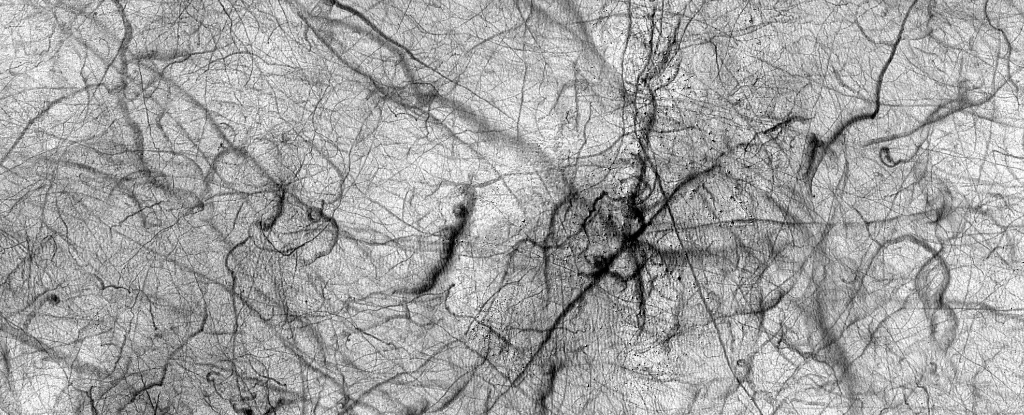Recent advancements in space exploration have unveiled some of the most breathtaking phenomena occurring on Mars, particularly focusing on the enigmatic dust devils that sweep across its surface. These swirling towers of dust not only depict the relentless activity of the Martian atmosphere but also provide crucial insights into the planet’s climatic and geological processes. The release of remarkable images from NASA’s Mars Reconnaissance Orbiter, particularly from the HiRISE camera, has shed light on the dynamic behavior of these whirlwinds and their implications for understanding Mars’ environment.
Dust devils on Mars, akin to tornadoes on Earth, are a product of unique atmospheric conditions. Formed when the sun heats the Martian surface, warm air rises rapidly, creating pressure differentials that draw dust into a spinning vortex. This phenomenon ranges from small, harmless whirlwinds to colossal dust storms that can span kilometers, lasting for extensive periods. The study of these events is vital, as they not only redistribute dust across the Martian landscape but also significantly influence local weather patterns.
Dust devils play a dual role on Mars; while they can hinder technological instruments by depositing dust on solar panels—impairing their functionality—they also possess a cleansing capability. The strong winds generated by these dust devils can sometimes clear accumulated particles, restoring the efficiency of solar energy systems and other scientific equipment. Understanding this intricate relationship is critical for ensuring the success and longevity of future missions on the Martian surface.
The recent imagery captured in September 2022, particularly in the Haldane Crater, reveals a breathtaking tapestry of dust devil activity. Scientists are working diligently to decode the visual data, analyzing trails left behind by these swirling winds. By examining their patterns, researchers can estimate the rate of dust accumulation and gain deeper insight into atmospheric processes that govern Mars’ climate.
Understanding how dust travels and settles is paramount for scientists, as it allows them to trace the historical climate patterns of Mars. Geological evidence suggests that Mars was once a planet teeming with liquid water and a thicker atmosphere capable of supporting life. These dust devils may hold clues to these earlier conditions, shedding light on the shifts that have led to the current harsh environment.
Mars, the fourth planet from the Sun, is known as the ‘Red Planet’ due to its distinctive reddish hue caused by iron oxide prevalent in its soil. The Martian atmosphere, characterized by its thinness, comprises approximately 95% carbon dioxide with traces of nitrogen, argon, and oxygen, making it inhospitable to human life without advanced technology. This sparse atmosphere, only about 1% as dense as that of Earth, shapes the planet’s cold climate, averaging around -60 °C.
Moreover, Mars’ surface is marked by diverse geological features, including expansive plains, towering volcanoes like Olympus Mons, and the sprawling canyon system of Valles Marineris. Each of these formations offers scientists clues to the planet’s geological history and its ability to support life.
As astronomers and scientists continue to study Martian dust devils through high-resolution imagery, they gather valuable data essential for future exploration. By analyzing how dust accumulates and disperses, they aim to enhance our understanding of Martian weather systems and their potential impact on robotic missions aimed at exploring the planet’s surface.
The knowledge gained from these studies will be instrumental in designing robust technologies capable of withstanding the challenges posed by Martian weather phenomena. Ensuring that equipment remains functional is vital as missions become more complex and ambitious, including the prospect of human travel to Mars.
The mesmerizing movement of dust devils across the Martian landscape serves as a testament to the dynamic nature of our neighboring planet. Through continued observation and research, scientists are piecing together the intricate puzzle of Mars’ atmospheric processes, which not only informs our understanding of the Red Planet but also holds potential insights into the history of life in our solar system. As we pave the way for future ventures to Mars, the importance of grasping these natural phenomena cannot be overstated, as they play a crucial role in unraveling the mysteries that lie beyond our planet.


Leave a Reply